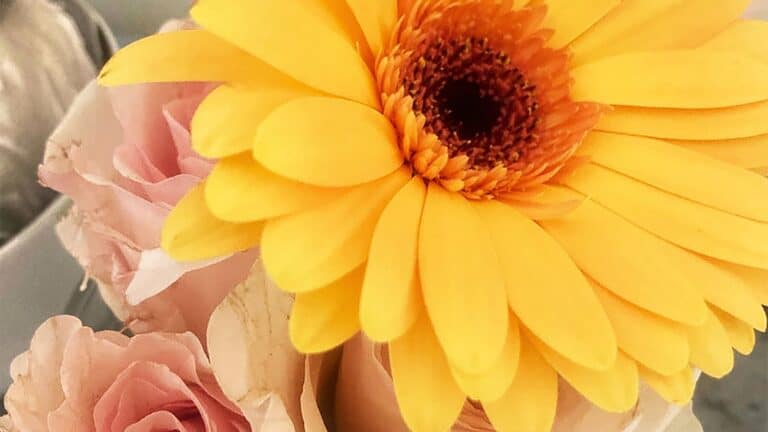10 Garden Plants You Can Bring Indoors to Survive Winter
As the chill of winter approaches, many gardeners face the annual dilemma: how to protect their cherished plants from the impending frost and freezing temperatures. While some plants are hardy enough to withstand the cold, others need a little extra care to survive the winter months. Bringing certain garden plants indoors is an excellent way to preserve them for the next growing season and continue enjoying their beauty year-round. In this gallery guide, we’ll explore ten popular garden plants that you can successfully overwinter indoors, along with tips on how to care for them to ensure their survival.
1. Geraniums (Pelargonium)

Geraniums are beloved for their vibrant blooms and are surprisingly easy to overwinter indoors. Before the first frost hits, dig up your geraniums and transplant them into containers filled with well-draining potting soil. Place them in a bright, sunny window where they can receive at least six hours of sunlight daily. Water them sparingly, allowing the soil to dry out slightly between waterings to prevent root rot. According to the University of Minnesota Extension, geraniums prefer cooler indoor temperatures ranging from 60-65°F (15-18°C) during the winter months.
2. Herbs (Various Species)

Many herbs, such as rosemary, thyme, basil, and sage, can thrive indoors during the winter. Before the weather turns cold, pot up your herbs and place them on a sunny windowsill where they can get plenty of light. Keep in mind that while herbs may not grow as vigorously indoors, they will survive until spring. The Oregon State University Extension Service notes that maintaining proper light and humidity levels is key to keeping herbs healthy indoors.
3. Tropical Hibiscus (Hibiscus rosa-sinensis)

Tropical hibiscus plants are sensitive to cold temperatures and should be brought indoors when the temperature drops below 50°F (10°C). Before moving them inside, inspect the plants for pests and prune them back by about one-third to manage their size and encourage new growth. Place your hibiscus in a bright location with plenty of indirect sunlight and keep the soil consistently moist but not waterlogged. The University of Florida IFAS Extension recommends maintaining humidity levels around the plant to mimic its natural tropical environment.
4. Begonias (Begonia spp.)

Begonias are versatile plants with varieties that can be overwintered indoors. For tuberous begonias, carefully dig up the tubers after the foliage has died back and store them in a cool, dry place until spring. For fibrous and rhizomatous begonias, pot them up and place them in a bright spot indoors. Begonias prefer high humidity, so using a pebble tray with water or a humidifier can help keep them healthy. The Chicago Botanic Garden suggests avoiding direct sunlight to prevent leaf scorch.
5. Coleus (Plectranthus scutellarioides)

Known for their stunning foliage, coleus plants can be easily brought indoors before the first frost. You can either pot up the entire plant or take cuttings to propagate new plants. Place them in a bright area but avoid direct midday sun, which can be too intense. Water moderately, allowing the top inch of soil to dry out between waterings. The University of Wisconsin-Madison Extension advises reducing fertilization during the winter months to prevent leggy growth.
6. Fuchsias (Fuchsia spp.)

Fuchsias can be overwintered indoors either as dormant plants or as actively growing houseplants. For dormant storage, prune the plant back significantly and place it in a cool, dark area like a basement or garage, watering just enough to keep the roots from drying out completely. If you prefer to keep your fuchsia growing, place it in a bright spot indoors and maintain high humidity levels. The Royal Horticultural Society recommends gradually acclimating fuchsias to indoor conditions to reduce stress.
7. Citrus Trees (Citrus spp.)

Potted citrus trees, such as lemon, lime, and orange trees, can be brought indoors to protect them from frost. Place your citrus tree in the sunniest location possible, ideally near a south-facing window. Maintain consistent moisture in the soil but be careful not to overwater. The University of California Agriculture and Natural Resources suggests reducing fertilization during the winter months and watching for signs of pests like spider mites and scale insects.
8. Tender Succulents (Various Species)

Succulents such as echeverias, sedums, and aloes are not typically cold-hardy and can benefit from being indoors during winter. Place them in a location that receives plenty of bright, indirect sunlight. Water sparingly, as overwatering can lead to root rot; allow the soil to dry out completely between waterings. The Missouri Botanical Gardenemphasizes the importance of good air circulation and avoiding humid environments for succulents.
9. Caladiums (Caladium spp.)

Caladiums, known for their colorful foliage, can be overwintered by digging up the tubers before the first frost. Allow the tubers to dry for a week, then store them in peat moss or dry sand in a warm, dry place. Alternatively, potted caladiums can be brought indoors and treated as houseplants, though they may enter a dormant phase. The University of Florida IFAS Extension recommends reducing watering as the plant’s growth slows.
10. Angel’s Trumpet (Brugmansia spp.)

Angel’s trumpet is a tropical shrub known for its large, fragrant flowers. Before temperatures dip below 50°F (10°C), prune the plant back by about half and bring it indoors. Place it in a bright location and maintain temperatures above 50°F for optimal growth. Be cautious, as all parts of the plant are toxic if ingested. The North Carolina State University Cooperative Extension advises wearing gloves when handling the plant and keeping it away from pets and children.
Conclusion

Bringing garden plants indoors for the winter not only protects them from harsh weather but also allows you to enjoy their beauty year-round. By providing the proper care and environment, these plants can thrive indoors and be ready to grace your garden again come spring. Before moving plants inside, always check for pests and diseases to prevent them from spreading to your indoor plants. Regular monitoring and appropriate care will ensure your plants remain healthy throughout the winter season.
The Most Foolproof Indoor Plants for People Who Struggle to Keep Plants Alive

Bringing greenery into your home can have a transformative effect on your living space, adding life, color, and even improving air quality. However, for many people, keeping houseplants alive can be a daunting challenge. If you’ve ever felt like you have a “black thumb,” you’re not alone. Fortunately, there are several indoor plants that are incredibly resilient and low-maintenance, making them perfect for those who have struggled with plant care in the past. This article will explore the most foolproof indoor plants that can thrive even with minimal attention, ensuring that everyone can enjoy the benefits of houseplants, regardless of their gardening experience.
READ: The Most Foolproof Indoor Plants for People Who Struggle to Keep Plants Alive
Plan a Trip to the Top Botanical Gardens in the U.S.! An Unforgettable Journey Through America’s Finest Flora

Visiting botanical gardens is a delightful way to immerse yourself in the beauty of nature, learn about diverse plant species, and find peace in meticulously designed landscapes. The United States boasts some of the most impressive botanical gardens, each offering unique experiences and horticultural wonders. In this guide, we will explore the best botanical gardens across the country, highlighting their distinctive features and must-see attractions.
Join Us

Join us on this empowering journey as we explore, celebrate, and elevate “her story.” The Queen Zone is not just a platform; it’s a community where women from all walks of life can come together, share their experiences, and inspire one another. Welcome to a space where the female experience takes center stage. Sign up for our newsletter so you don’t miss a thing, Queen!







